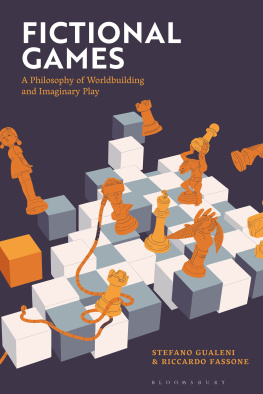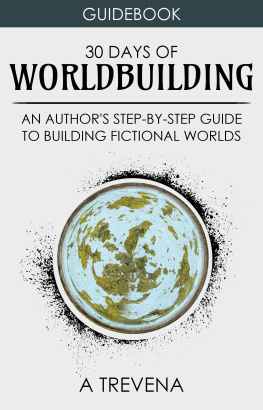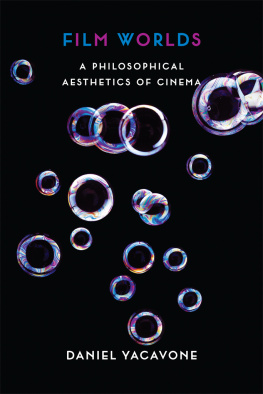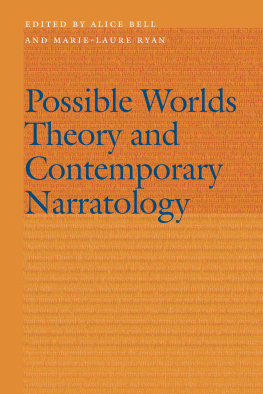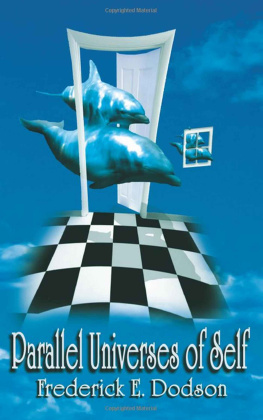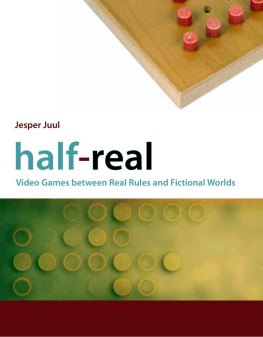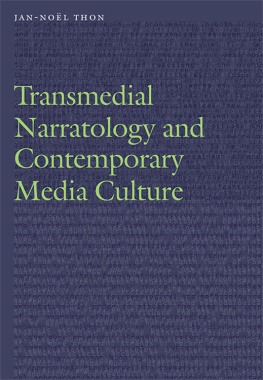
TRANSMEDIAL WORLDS IN EVERYDAY LIFE
In this pioneering new book, authors Tosca and Klastrup explore the many ways that transmedial worlds are present in peoples everyday life, proposing a new theory of (trans)media use for the digital age.
People are not only reading, watching and playing in fictional worlds like never before, but also using them to reflect about their lives through Facebook, Twitter, YouTube and other channels, commenting on their marriages or their life at the office, analyzing current news, or reminiscing on the role these worlds played in their childhood. The books unique methodological approach combines an aesthetic and literary perspective that looks closely at the different fictional universes, with an empirical user perspective that builds upon 15 years of sustained work on transmediality. The result is a theory that covers both the personal, experiential dimension of fictional worlds and the social dimension of sharing with each other.
A fascinating and contemporary examination of media worlds and their communities, this book offers students and scholars of fandom, media, cultural and reception studies a new theoretical and methodological framework, through which to understand the phenomenon of transmedial worlds, and peoples engagement with them.
Susana Tosca is an Associate Professor at the Department of Communication and Humanities at Roskilde University, Denmark. Over the last 20 years, her research has combined aesthetic and media studies approaches to investigating the reception of digital media. She has published widely on the areas of hypertext, digital literature, computer games and transmediality. She is also the author of the books Understanding Videogames and Literatura Digital .
Lisbeth Klastrup is an Associate Professor at the Digital Design Department at the IT University at Copenhagen, Denmark. For 20 years, she has researched the interplay between aesthetics, media formats and social interaction. She has published widely within the areas of virtual worlds, transmedial worlds, social media and digital culture. She is the author of the book Sociale Netvrksmedier , and co-editor of the International Handbook of Internet Research (1st and 2nd edition).
Since the mid-2000s, Susana Tosca and Lisbeth Klastrup have established themselves as pioneers of virtual and transmedial world scholarship. In this new book, the authors draw on their impressive theoretical knowledge and empirical research to approach transmedial worlds from a hitherto neglected perspective.
Marie Laure Ryan, author of Narrative as Virtual Reality II: Revisiting Immersion and Interactivity in Literature and Electronic Media
TRANSMEDIAL
WORLDS IN
EVERYDAY LIFE
Networked Reception, Social
Media and Fictional Worlds
Susana Tosca and Lisbeth Klastrup
First published 2020
by Routledge
52 Vanderbilt Avenue, New York, NY 10017
and by Routledge
2 Park Square, Milton Park, Abingdon, Oxon, OX14 4RN
Routledge is an imprint of the Taylor & Francis Group, an informa business
2020 Taylor & Francis
The right of Susana Tosca and Lisbeth Klastrup to be identified as authors of this work has been asserted by them in accordance with sections 77 and 78 of the Copyright, Designs and Patents Act 1988.
All rights reserved. No part of this book may be reprinted or reproduced or utilised in any form or by any electronic, mechanical, or other means, now known or hereafter invented, including photocopying and recording, or in any information storage or retrieval system, without permission in writing from the publishers.
Trademark notice : Product or corporate names may be trademarks or registered trademarks, and are used only for identification and explanation without intent to infringe.
Library of Congress Cataloging-in-Publication Data
A catalog record for this title has been requested
ISBN: 978-1-138-55798-7 (hbk)
ISBN: 978-1-138-55800-7 (pbk)
ISBN: 978-1-315-15117-5 (ebk)
Typeset in Bembo
by Swales & Willis Ltd, Exeter, Devon, UK
In memory of our transmedial colleague Kjetil Sandvik
This book has been a long time in the making. In the chapters to come, we build on thoughts, writings and conversations we have had for the last 15 years. While what we present in this book is mainly new and/or modified theoretical models, new thoughts and new empirical material, we do also build on older models, reference older empirical studies as well as refine ideas which have been published or presented prior to the publication of this book, either as book chapters, articles or conference presentations. In particular, we draw on these earlier works (listed in chronological order):
Klastrup, L. & Tosca, S. (2004). Transmedial worlds: rethinking cyberworld design. In Proceedings International Conference on Cyberworlds 2004 . Tokyo.
Klastrup, L. & Tosca, S. (2009). MMOGs and the ecology of fiction: understanding LOTRO as a transmedial world. In Breaking new ground: innovation in games, play, practice and theory . DIGRA.
Klastrup, L. & Tosca, S. (2011). When fans become players: LOTRO in a transmedial world. In Krzywinska, T. & Parsler, J. (Eds.) Ring bearers: the Lord of the Rings online as intertextual narrative . Manchester: Manchester University Press, 4669.
Tosca, S. & Klastrup, L. (2014). A Game of Thrones: transmedial worlds, fandom, and social gaming. In Ryan, M.L. & Thon, J.N. (Eds.) Storyworlds across media . Nebraska: University of Nebraska Press, 295314.
Tosca, S. & Klastrup, L. (2016). The expert female fan recap on YouTube. In Schubart, R. & Gjelsvik, A. (Eds.) Women of ice and fire: gender, Game of Thrones and multiple media engagements . London: Bloomsbury Academic.
Tosca, S. & Klastrup, L. (2016). The networked reception of transmedial universes: An experience-centered approach. MedieKultur: Journal of Media and Communication Research, 32 (60), 107122.
Tosca, S. & Klastrup, L. (2018). An experience approach to transmedia fictions. In Freeman, M. & Gambarato, R.R. (Eds.) The Routledge companion to transmedia studies . London: Routledge.
1. Introduction
In the winter of 2001, in a cozy Copenhagen underground bar, one of the authors of this book gave the other the One Ring as a birthday present. It shone brightly as we held it up against the dim candlelight, the runes were visible so we could recite their ominous message: Ash nazg durbatulk, ash nazg gimbatul, ash nazg thrakatulk agh burzum-ishi krimpatul . We covered our ears playfully; the evil words making the red wine taste a bit more intense. One Ring to rule them all, One Ring to find them, One Ring to bring them all and in the darkness bind them . It almost certainly was not the real One Ring, but it did actually have a lot of power, and still has, because it symbolized a lot of what has brought us together as academic colleagues and friends. When we met each other in the late 1990s, we were young graduate students from two venerable universities with media studies backgrounds firmly anchored in literary theory and the masterpieces of the Western canon. In our PhD projects, we were respectively investigating electronic literature and virtual worlds, and we were part of the rebellious group of people that had moved away from print text and were trying to find out what this new digital medium was and what it meant for audiences to suddenly become interactors, users or navigators. Our research topics were a natural point of contact, but we were as much united by the fact that we shared a love of popular culture and the fictional universes that we would later come to name transmedial worlds , or rich content systems that could be encountered and engaged with on a variety of different platforms (books, films, comics, videogames, board games, etc.). It was good to be able to discuss postmodern literary theory with someone who also thought that the digital medium was worthy of study, but it was even better to be able to do it while cracking Tolkien jokes or grinding together in Everquest . Actually, playing online multi-player videogames marked the beginning of our transmedial journey, as we started to wonder how these games repurposed material from other media (books or films) in order to create a different kind of experience. This led to our first joint article in 2004, Transmedial Worlds Rethinking Cyberworld Design, in which we outlined the basics of our transmedial world model. Our academic friendship story is probably not that notable anymore, because the attitude towards both popular cultural formats and the digital medium has radically changed in academia over the last 20 years, but our objects of interest still occupy a fragile position. During the writing of this book, we have found ourselves more than once having to justify that popular fiction universes can be a legitimate object of study.


